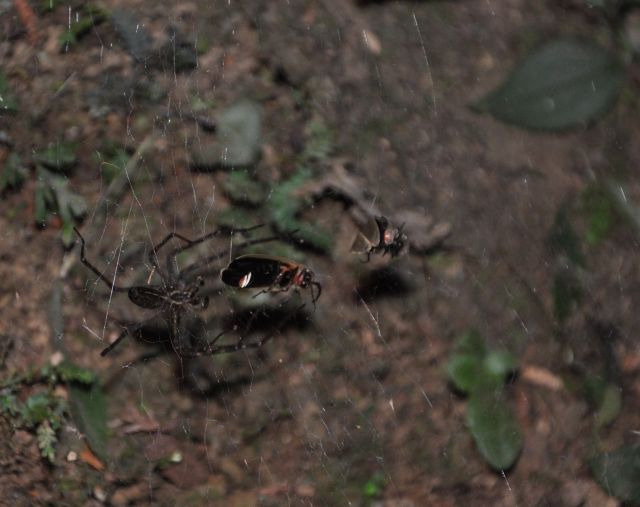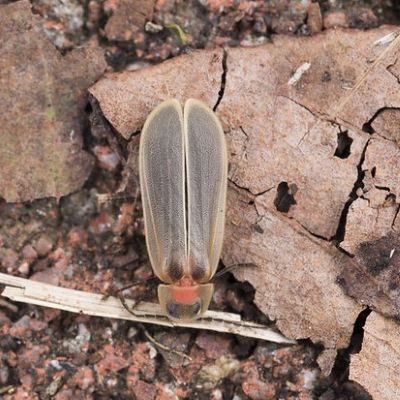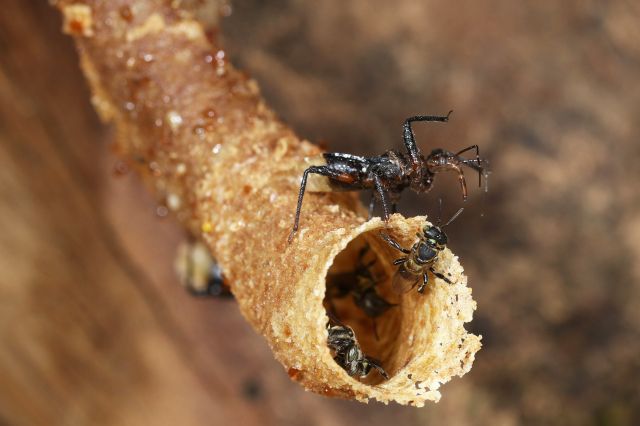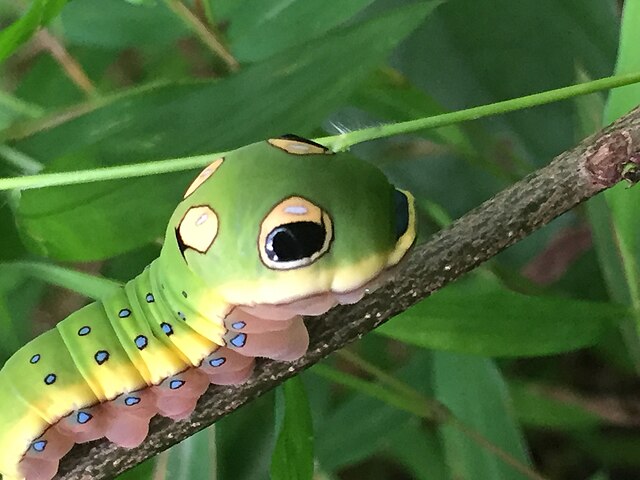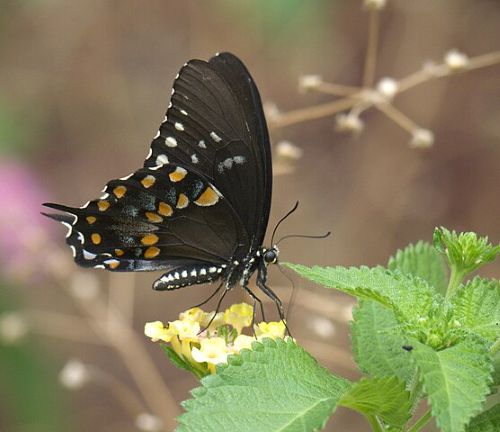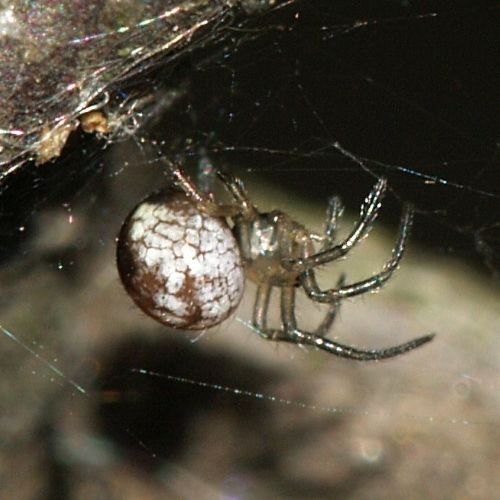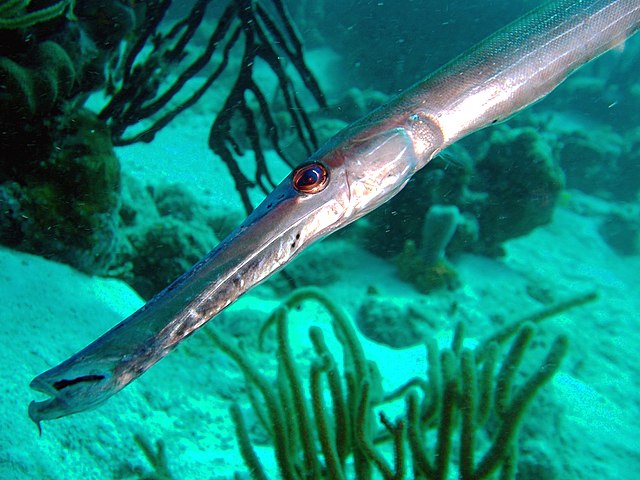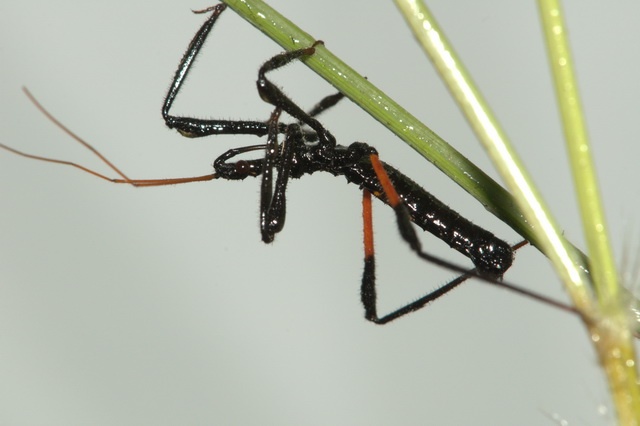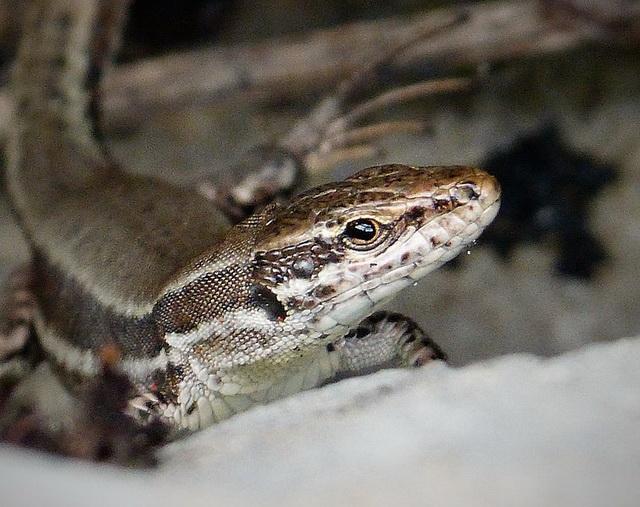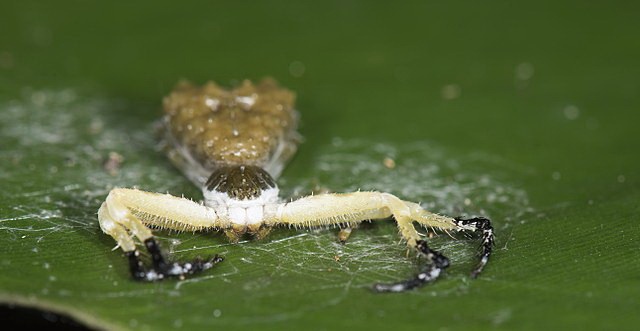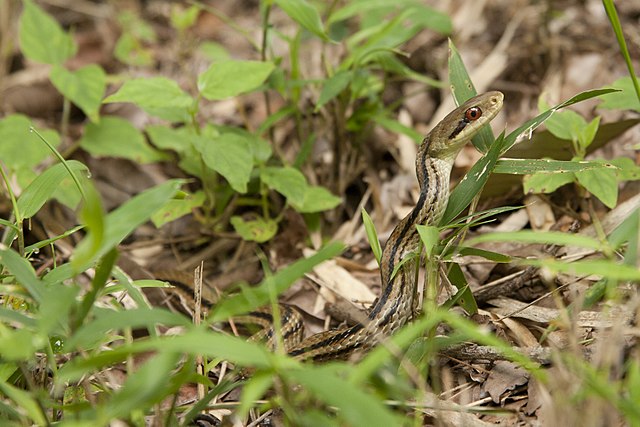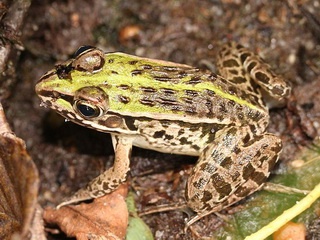Ensnared fireflies lure others into the trap
The Taiwanese spider Psechrus clavis will not immediately consume a firefly that has flown into her web. That is because the insect’s lanterns still glow for an hour, attracting even more tasty fireflies, Ho Yin Yip and colleagues write.
Fireflies exchange sexual messages with light produced by chemical reactions in special organs in their abdomen. The winter firefly Diaphanes lampyroides from Taiwan is an example. Males and females use light signals to locate each other. It is an effective communication system.
The Taiwanese spider Psechrus clavis exploits this sexual signal. If a glowing firefly lands in her web, she uses it to intercept more fireflies.
Glow
Fireflies are also called glowworms. Both names are misleading, as they are neither flies nor worms, but beetles (family Lampyridae). Adult females have no wings, and lying on the ground at night, they emit light to attract males; depending on the species, they do this continuously or intermittently. Males locate females by flying around. In some species, males do not emit light; in others, they produce a constant glow, and in still others, they emit series of flashes to reveal their presence.
In Diaphanes lampyroides, both males and females emit a constant glow in the dark. Males have two ‘lanterns’, females have four.
For the spider Psechrus clavis their light comes in handy.
Decoy
Psechrus clavis is active in the dark. Females weave an irregular sheet-web horizontally above the ground. It was already known that the white silk of the web and the yellow stripe on the abdomen of the spider, which hangs below the web, attract insects, particularly moths. Now, it appears that the catch is greater when male fireflies are ensnared in the web (female fireflies never end up in a web, since they do not fly).
The researchers observed that the spider simply leaves such a firefly hanging, while she immediately consumes any other prey. The two lanterns of a captured male firefly continue to glow for an hour. And this light attracts other male fireflies, many of which will also fly into the web. Field experiments with LED lights in spider webs confirm the attractivity of the light.
By sparing a male firefly and using it as a decoy, Psechrus clavis catches more of these beetles. A clever strategy.
The question is why male fireflies are attracted to a glowing male in a Psechrus clavis web. Aren’t they looking for females? Probably, males have difficulty distinguishing the two immobile lights of a captive male from the four lights of a stationary female; the lights are the same colour. It is better then to approach all immobile lights than to miss a chance to encounter a female.
Manipulation
Another question is why a man caught in a web keeps glowing. Its light is of no use anymore. Perhaps, the researchers write, it is a response to danger: fireflies also use their lights to deter predators. Or perhaps the spider forces him to keep glowing.
The latter seems unlikely. But Xinhua Fu and colleagues described exactly such a case of coercion last year. Their research concerned another Asian spider, namely Araneus ventricosus, which is also active at night and weaves an orb web. One of this spider’s prey species is the firefly Abscondita terminalis, a species in which immobile females regularly broadcast single-pulse light signals with one lantern, while flying males produce flash trains with two lanterns.
A male’s behaviour changes radically once he has flown into the web of Araneus ventricosus. He starts emitting light signals that mimic those of a female: single-pulse flashes emitted from a single lantern. Other males are attracted to this signal and also become ensnared – to the spider’s advantage.
Apparently, the spider Araneus ventricosus manipulates the captive male, but it is unknown how. She uses venom to paralyze prey, and researchers hypothesize that her bite or venom affects the nervous system of a captive male firefly in such a way that it switches to an abnormal, feminine light signal.
Willy van Strien
Photos:
Large: the Taiwanese spider Psechrus clavis with fireflies in her web. ©Tunghai University Spider Lab
Small: winter firefly Diaphanes lampyroides, male. LiCheng Shih (via Flickr, Creative Commons CC BY 2.0)
Sources:
Yip, H.Y., S.J. Blamires, C-P. Liao & I-M. Tso, 2025. Prey bioluminescence-mediated visual luring in a sit and wait predator. Journal of Animal Ecology, 27 August online. Doi: 10.1111/1365-2656.70102
Fu, X., L. Yu, W. Zhou, C. Lei, R.R. Jackson, M. Kuntner, Q. Huang, S. Zhang & D. Li, 2024. Spiders manipulate and exploit bioluminescent signals of fireflies. Current Biology 34: PR768-R769. Doi: 10.1016/j.cub.2024.07.011
Lai, C-W., S. Zhang, D. Piorkowski , C-P. Liao & I-M. Tso, 2017. A trap and a lure: dual function of a nocturnal animal construction. Animal Behaviour 130: 159-164. Doi: 10.1016/j.anbehav.2017.06.016
